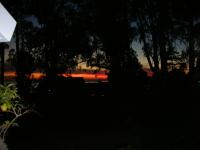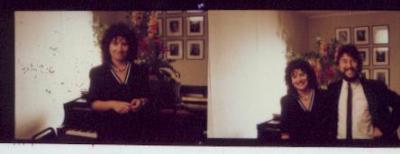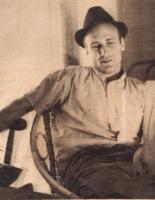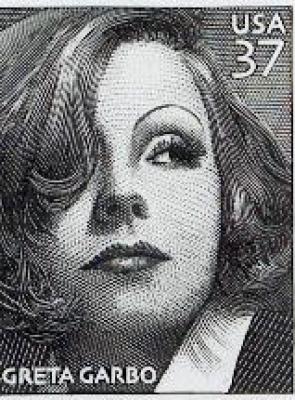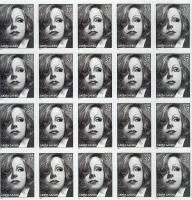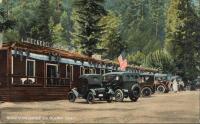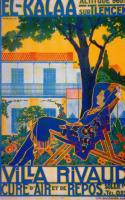Can you Find the Sunset?
Me & Roger & Meryl
In 1983 I was assigned to “interview” Meryl Streep–she was appearing at the San Francisco Symphony, reciting verses from The Tale of Peter Rabbit.
There are quote marks around “interview” because Ms. Streep, at least that evening, wasn’t going to do an interview, as we think of interviews. That was the deal. I couldn’t ask her any questions, not one question. It was weird. (I can’t help thinking that’s why I was sent!)
With me was nationally known San Francisco photographer Roger Ressmeyer–the piece, if it ran, would be Roger’s photo of the star with a caption, which I would provide the details for.
Meryl Streep’s fame was soaring, having recently starred in Sophie’s Choice and Silkwood. I can’t deny I was excited even if I couldn’t ask her any questions.
Meanwhile Roger and I waited for the star to arrive. We waited in a special room with a lovely piano backstage at the San Francisco Symphony’s Davies Hall. There was also a couch. (That’s Roger and me waiting in the photo at the top of the page).
To forever remember the unusual occasion ,Roger set his camera on a timer so he could have a picture of us waiting together.
Roger! If you see this, do you still have the photos of Ms. Streep?
Well, the moment finally came. Meryl Streep swept into the room, (accompanied by someone), she sat down on the couch and sang a little and chatted, all to herself. I was mostly there to observe. I think the famous actress was diappointed to see me, not the viper-type, ready to sting, but a harmless-looking stringer-reporter.
Me & Ken Kesey
I never knew Ken Kesey personally but one of the first books my father gave me was “One Flew Over the Cukoo’s Nest”
“Cukoo’s Nest” made such a deep impression on me, and when I discovered that he lived in woodsy, isolated La Honda, and I saw the cabin he lived in, I felt very close to this author I so admired.
It was the 60’s–almost “romantic” now–remember Kesey’s day glo spray painted bus (now in the Smithsonian museum, driven there by Kesey himself a few years before passed) and the Merry Pranksters.
The folks in La Honda did not appreciate Kesey choosing their neck of the redwoods to live and write and play in. Legend has it that on more than one occasion Kesey walked to his mailbox outside to find bullet holes in it.
And of course Ken Kesey had his share of legal problems–I’ll try to get into a more detailed bio of the famous author in a future post because his past directly relates to the writing of that great book, “Cukoo’s Nest”.
Ron Duarte of Duartes Tavern in Pescadero, Ron’s Aunt Carrie, now gone, once told me Ken Kesey came down from the mountains to take out books at the local library. She was the librarian, she would get to know everybody who took out books.
When I was on the San Mateo County Historical Museum’s Board of Directors some years ago, I wrote Ken Kesey and asked him if he would contribute an article–or even a “fragment” to our historical publication, “La Peninsula”. I typed the letter on a typewriter, I think, and mailed it to his farm in Oregon. He had moved there from La Honda. I’m sure life there was more peaceful.
Was I surprised when I received an answer from Ken Kesey. I must have been jumping up and down–he had used my typed letter to create a work of art with his magic marker pens.
Here’s Kesey’s response to my request that he pen “something” for the county’s historical journal.
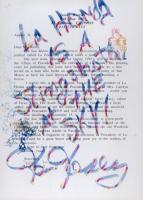 (Imposed over my letter Kesey’s colorful magic marker words read: “La Honda is a slingshot at the sky!”)
(Imposed over my letter Kesey’s colorful magic marker words read: “La Honda is a slingshot at the sky!”)
When Ken Kesey was delivering the historic day-glowed magic bus to the Smithsonian in D.C., he stopped off in San Francisco at a book fair and I almost talked to him but he was in motion, moving here, moving there, physically, a small man, but he was a muscular ball of energy.
I never knew Kesey personally but I will never let go of my old copy of “Cukoo’s Nest”, both a reminder of the culture-changing 1960s and of a great book filled with truths that will remain relevant forever.
Murder in Montara: Part II
In the summer of 1946 the bodies of two dead children, 7 months and about two-years-old, were discovered partly buried beneath a blanket of leaves in remote Wagner Canyon in Montara. The children’s mother, 21-year-old Lorraine Newton, was found a few feet away, shoeless and stumbling about in a daze, her skull fractured from a blunt instrument, perhaps a hammer or tire iron.
The lone survivor of this vicious crime, police brought Lorraine to the Community Hospital in Half Moon Bay where, under the care of Colonel Harold Roycroft, she sank into and out of consciousness, sometimes calling for her daughters, Barbara and Carolina Lee. Few questions were permitted (and she was not told the little girls were dead) but investigators learned that she was an Alameda resident and that a day earlier she, her husband, Vorhas, and the kids, sat in their car and watched the waves at scenic Rockaway Beach in Pacifica. She recalled little else–or the authorities weren’t making anything else public.
Colonel Roycroft said Lorraine had a 50-50 chance of making it. He said the wound that caved in her skull appeared to have resulted from the same weapon used to kill the children.
But John Kyne, the Coastsider who found Lorraine Newton, saw what he believed was the suspect’s car and that gave investigators good information on go on. That car, authorities learned, had been borrowed from Vorhas’s sister and returned.
“So far, we have found nothing to establish a motive for the murder,” Sheriff Walter Moore told the media which dubbed the heinous crime “The Babes in the Woods” case. “It appears that [Vorhas] Newton may have suddenly gone berserk during the family ride.”
In the East Bay, where the Newtons resided in Alameda, Frank Marlowe, the County D.A.’s investigator was talking to neighbors about Lorraine and Vorhas. They were unanimous in their impression of the Newtons as a nice couple. Vorhas was “modest and mild-mannered”, an amateur wrestler.
Newton’s brother, Ben, who lived in San Francisco, described his brother and sister-in-law as happily married, with Vorhas the “perfect husband” He worked as a glazier for the W.P. Fuller Company in South San Francisco and had worked for the Coast Guard until six months earlier.
But where was Vorhas Newton? Nobody seemed to know.
He didn’t have a car and police were looking for him at railroad and bus stations. There were sightings of him from Redwood City to Marysville but nothing panned out.
In the Esst Bay Investigator Frank Marlowe learned that Vorhas had returned to the couple’s Alameda apartment where the Newtons had lived for three or four months. In the neat and clean apartment, Vorhas changed his clothes, and before leaving again, placed one of his wife’s dress on the bed and put baby bottles on the ktichen table.
More details dribbled out. The killer had removed all identification from the scene of the crime, including labels from the clothing of the children such as the red checked gingham dress the two-year-old had been wearing. Lorraine didn’t know what had happened to her wedding ring, it was not on her finger.
Meanwhile Lorraine’s parents, the Tuttles of North Hollywood, flew into Mills Field to be by the bedside of their beloved daughter.
….To Be Continued
Could It Get Any Better?
Cool Garbo Stamps
Bonzagni Lodge
Too Too Gorgeous to Work
November in El Granada: Enjoy the warm weather.
Update: Patricia Cornwell’s “Predator” & A Personal Note
I’m almost finished with Patricia Cornwell’s latest book, "Predator," and, I know, I know I complained about the work in an earlier post. But after I got through that rough spot the book turned into a real page-turner, a gory page-turner, you just can’t take that stuff seriously. I don’t let the gory stuff penetrate…I must have missed one of her earlier books because her niece, Lucy, and former cop-now "co-worker", Marino, sure have gone through some serious personality changes. Cornwell also has former FBI man Benton bitterly complain about how the effect of the Patriot Act on personal privacy.
Do you remember when President Clinton was defending himself from yet another womanizing charge–I forget her name, she was doing volunteer work, fundraising, her husband had committed suicide because he was bankrupt, and she said she told Clinton and he touched her improperly. Remember? She even went on 60 minutes with her charges.
In the heat of all this embarrassment Clinton said something like: go ask Patricia Cornwell, down in Virginia ask her what people think (of this woman who was bringing charges against the President).
In Cornwell’s new book, one evil character wears a hood, and that could be what put me off.
I remember a frightening incident, the first time such a thing had happened to me, oh, in the early 1980s. I was working for a little over-the-hill newspaper, free-lancing, and I was assigned to do a story on a few bars with character, historic. I took a girlfriend with me. As I recall there was a cowboy bar on Canada Road in Woodside and another on Skyline.
And then around 10 p.m. we headed over Highway 92, back home to the Coastside. I was driving and I intended to drop my friend off at her home in Half Moon Bay when I looked in the rear view mirror and told her: "I think we’re being followed."
I wasn’t sure; I’d never been followed before.
"That car’s still there. I’m not taking you home."
I decided to drive to El Granada; I was looking for police.
My friend said, "Why don’t you go to the ‘quick stop’. There’s a phone there." 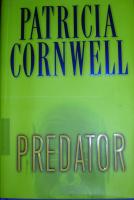
The ‘quick stop’, that’s what we called it, was open ’til midnight and all lit up and outside there was a phone booth (an almost extinct species now).
It was dark driving along the road paralleling Highway 1, and nobody else was around, and when I looked in the rearview mirror, the car was still there, not sitting on my bumper, back back a few car-lengths. But now instead of it just being a car and not being able to see anything but the car, there was a frightening change—the man, it must have been a man, had turned the interior light on and had covered his head with a hood!
I don’t remember if I screamed but I knew I was close to the "quick-stop" and the lights and the phone and that gave me confidence. The man in the car behind us must not have known. Had he followed us from one of the bars we visited? He must have!
Seconds later I saw the lights, we were safe (and the car that had followed us vanished back into the darkness). I ran to the phone and called the police and they came right away and they followed my car as I took my friend home and they followed me home and said they would be checking my house all night long. Which the police did, shining a search light on my house every so many minutes.

